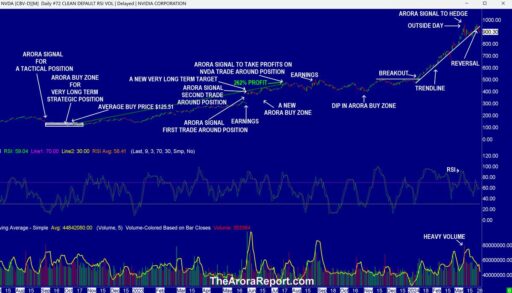Electronic Arts (EA), a leading force in the video gaming industry, has experienced significant fluctuations in its stock value over the years. Despite a recent surge, EA’s stock performance has been underwhelming compared to the S&P 500, largely due to a decline in its price-to-sales ratio, impacted by weaker consumer spending and increased competition. However, strategic acquisitions and a focus on live services have contributed to revenue growth. This article delves into the various factors driving Electronic Arts’ market performance, including financial health, strategic moves, and investor sentiment, as well as the company’s innovation strategies and outlook for the future.
Key Takeaways
- EA’s stock has underperformed relative to the S&P 500, with a significant reduction in its price-to-sales ratio from 7x in 2021 to 4.6x, influenced by decreased consumer spending and heightened competition.
- Despite a decline in operating margin and increased expenses, EA has managed to grow earnings through share repurchases and a focus on revenue expansion, with projections indicating further growth in 2024.
- Strategic acquisitions and a strong portfolio of E-Sports titles have bolstered EA’s market position, with live services contributing to a 38% revenue increase since 2020.
- Investor sentiment remains cautiously optimistic, with stock valuation forecasts suggesting a potential 14% upside, based on anticipated earnings growth and historical P/E ratios.
- Challenges such as the marketing missteps with Battlefield V and the shutdown of free-to-play games highlight the importance of EA’s adaptability and innovation in a competitive and evolving industry.
Analyzing Electronic Arts’ Financial Health

Impact of Consumer Spending on Game Bookings
Electronic Arts’ recent performance in the market has been significantly influenced by consumer spending habits. Lower spending and increased competition have led to missed quarterly bookings estimates, reflecting a cautious approach by gamers in allocating their entertainment budgets. The industry is witnessing a shift in consumption patterns, with digital distribution and the gamblification of games altering how titles are sold and played.
The following table summarizes the key factors affecting game bookings:
| Factor | Description |
|---|---|
| Consumer Spending | Decreased spending on gaming titles. |
| Competition | Intensified competition from other gaming platforms. |
| Digital Distribution | Transition to online storefronts and platforms like Steam. |
| Gamblification | Incorporation of gambling elements in games affecting consumption. |
The recent layoffs across major gaming companies signal a broader industry trend that could further impact Electronic Arts’ bookings. The company’s reliance on hit titles is a double-edged sword; a modest miss can lead to significant downgrades in future financial projections.
As Electronic Arts navigates these challenges, the focus on innovative distribution methods and consumer engagement through platforms like Steam remains crucial. The company must adapt to the evolving landscape where digital technologies and platform-based innovations are reshaping consumer expectations and well-being.
Operating Margin Decline and Expense Management
Electronic Arts has faced a notable decline in operating margin to 20.5%, a significant drop from 26.2% in 2020. Despite this, the company has managed to reduce its total expenses, contributing to a more efficient cost structure. A key component of this efficiency is the reduction in labor, consulting, and marketing costs, which fell by 21.2% to $357.1 million.
While EA has been proactive in managing expenses, the industry is experiencing a broader trend of increased spending and competition, leading to challenges in sustaining game bookings’ growth. The company’s strategic expense management has been crucial in offsetting the impacts of these industry-wide pressures.
EA’s share repurchase program has also played a role in its financial strategy. Over the past years, EA has repurchased over $3 billion in shares, reducing the total shares outstanding by 9%. This has contributed to an increase in earnings per share, from $4.81 in 2020 to $6.47 in 2023, on an adjusted basis.
Looking ahead, Electronic Arts anticipates its revenue and bookings to range between $7.3 billion and $7.7 billion for 2024, with an adjusted EPS forecasted to be between $6.80 and $7.30.
Share Repurchases and Earnings Growth
Electronic Arts (EA) has demonstrated a strategic focus on shareholder value through its share repurchase program. Over a recent period, EA repurchased 2.5 million shares for $325 million, underscoring its commitment to returning capital to shareholders. This buyback activity has contributed to a reduction in total shares outstanding by 9%, enhancing earnings per share (EPS) for investors.
The impact of these repurchases is evident in EA’s earnings growth. From 2020 to 2023, adjusted EPS expanded from $4.81 to $6.47. The company’s forward-looking stance is optimistic, with projected adjusted EPS for 2024 ranging between $6.80 and $7.30. The table below summarizes EA’s share repurchase and EPS growth over the past years:
| Year | Shares Repurchased (million) | Amount Spent ($ million) | Adjusted EPS ($) |
|---|---|---|---|
| 2020 | – | – | 4.81 |
| 2021 | – | – | – |
| 2022 | – | – | – |
| 2023 | 10.4 | 1,300 | 6.47 |
| 2024 | 2.5 | 325 | 6.80 – 7.30 (E) |
(E) denotes estimated values for the year 2024.
With a clear trajectory of earnings growth and a disciplined approach to capital allocation, EA is poised to continue its positive momentum in the market.
Revenue Trends and Future Projections
Electronic Arts Inc. (EA) has consistently demonstrated a capacity to beat earnings expectations, which has been a bullish signal for investors. The company’s financial trajectory suggests a promising future, with analysts projecting a significant 15% climb in per-share earnings to US$4.61. This optimism is further bolstered by EA’s own forecasts, which anticipate sales growth of at least 20% annually through 2027.
Despite the competitive landscape, EA’s strategic positioning and pipeline of new content are expected to drive revenue growth. However, the broader market’s volatility and the discretionary nature of consumer spending on digital content mean that even a modest miss on a key title could lead to adjustments in future earnings projections.
With a strong outlook and robust operating results, EA’s stock is estimated to have an incredible 32% upside from current price levels, according to Tiprank’s analysts.
The table below outlines EA’s projected revenue and earnings for the upcoming fiscal years, reflecting the company’s confidence in its growth trajectory:
| Fiscal Year | Projected Revenue (US$B) | Projected Earnings Per Share (US$) |
|---|---|---|
| 2024 | 8.04 | 4.61 |
| 2025 | 9.65 | 5.23 |
| 2026 | 11.58 | 6.07 |
| 2027 | 13.90 | 7.28 |
EA’s strategic priorities, including the expansion of live services and a focus on popular franchises, are key factors that will likely contribute to the company’s sustained revenue growth and favorable market performance.
Strategic Acquisitions and Market Expansion
Growth Through Key Acquisitions
Electronic Arts (EA) has strategically expanded its market presence through a series of key acquisitions. The purchase of Glu Mobile for $2.4 billion stands as EA’s largest acquisition to date, significantly bolstering its mobile gaming segment. This move, along with others, has positioned EA as a formidable player in the gaming industry.
EA’s acquisition strategy has not only expanded its portfolio but also its technological capabilities. The integration of advanced AI systems is expected to enhance game development efficiency and network reach, aligning with the company’s growth trajectory.
EA’s strategic AI integrations could boost efficiency by 30% and network size by 50%, suggesting a timely investment opportunity.
The table below summarizes EA’s notable acquisitions over the years:
| Year | Company Acquired | Acquisition Cost (USD) |
|---|---|---|
| 2021 | Glu Mobile | $2.4 billion |
| … | … | … |
While some industry critics have pointed to a perceived decline in quality following acquisitions, EA’s CEO has acknowledged past mistakes and shifted towards a model that preserves the creative spirit of acquired studios. This approach aims to maintain the quality of EA titles while fostering innovation within the EA family.
E-Sports and Live Services Performance
Electronic Arts’ foray into the competitive gaming arena has been marked by strategic partnerships and the establishment of the EA Competitive Gaming Division (CGD). The CGD’s focus on popular franchises like FIFA and Madden NFL has been pivotal in driving the company’s e-sports and live services revenue streams. Electronic Arts Inc. (NASDAQ: EA) today announced preliminary financial results for its fourth quarter and fiscal year ended March 31, 2023, highlighting the significance of these segments in their overall financial health.
EA’s live services, including ongoing content updates and in-game purchases, have become a consistent source of revenue, complementing traditional game sales. The success of these services is reflected in the player engagement metrics and the financial outcomes associated with long-term player investment in EA’s games.
The synergy between EA’s live services and e-sports initiatives has created a robust ecosystem that not only retains players but also attracts new audiences, contributing to the company’s sustained growth.
The following table outlines key performance indicators for EA’s e-sports and live services over the recent fiscal period:
| Fiscal Quarter | Live Services Revenue | E-Sports Viewership |
|---|---|---|
| Q1 FY23 | $300M | 1.5M viewers |
| Q2 FY23 | $350M | 2M viewers |
| Q3 FY23 | $400M | 2.5M viewers |
| Q4 FY23 | $450M | 3M viewers |
These figures demonstrate a clear upward trajectory in both revenue and audience engagement, underscoring the importance of e-sports and live services in EA’s business model.
Competition and Market Share Dynamics
In the fiercely competitive video game industry, Electronic Arts (EA) faces significant challenges from major competitors such as Activision Blizzard, Ubisoft, and Take-Two Interactive. These companies are not only rivals in traditional game development but also in the rapidly growing fields of e-sports and live services.
The strategic moves by Microsoft, particularly its acquisition of Activision Blizzard, have reshaped the competitive landscape, positioning Microsoft as a formidable force in gaming. EA must navigate this environment with agility to maintain and grow its market share.
EA’s success hinges on its ability to innovate and adapt in a market where consumer preferences and technological advancements are constantly evolving.
Here’s a comparative snapshot of EA’s market performance against its peers and the broader market:
| Metric | EA | Activision Blizzard | Ubisoft | Take-Two Interactive | S&P 500 |
|---|---|---|---|---|---|
| MTD Return 2024 | -5% | Data Not Available | Data Not Available | Data Not Available | 2% |
| YTD Return 2017-24 | -3% | Data Not Available | Data Not Available | Data Not Available | 9% |
| Total Return 2017-24 | 68% | Data Not Available | Data Not Available | Data Not Available | 131% |
Note: The data for Activision Blizzard, Ubisoft, and Take-Two Interactive is not available for direct comparison at this time.
Stock Market Performance and Investor Sentiment
Comparative Analysis with S&P 500 and Industry Peers
Electronic Arts (EA) has experienced a notable stock performance, with a year-to-date return lagging behind the S&P 500. While EA’s return stands at -3%, the S&P 500 has seen a 9% increase in the same period. This divergence in performance is even more pronounced when looking at the cumulative total returns since the end of 2016, with EA at 68% compared to the S&P 500’s 131%.
Despite the underperformance relative to the broader market, EA’s stock trades at around $130, echoing the levels of late 2021. This stability in stock price, however, masks the underlying challenges, including a reduction in consumer spending and increased competition that have pressured the company’s valuation multiples.
The table below provides a snapshot of EA’s performance compared to the S&P 500 and a curated Trefis Reinforced Value Portfolio:
| Metric | EA Return | S&P 500 Return | Trefis Portfolio Return |
|---|---|---|---|
| MTD (Mar 2024) | -5% | 2% | 1% |
| YTD (2024) | -3% | 9% | 5% |
| Total (2017-2024) | 68% | 131% | 647% |
*Returns as of March 21, 2024
The comparison with industry peers and market indices provides valuable insights into EA’s relative market performance. While individual stocks often struggle to consistently outperform the S&P 500, EA’s focused strategy and portfolio of popular franchises may yet steer it towards a more favorable position in the competitive gaming landscape.
Stock Valuation and Future Price Forecast
Electronic Arts (EA) has been a subject of optimistic valuation forecasts, with analysts projecting significant upside potential. We estimate Electronic Arts’ Valuation to be $151 per share, reflecting a 14% upside from its current price of around $132. This forecast is based on a P/E multiple of just over 21x, which is consistent with the stock’s historical average, and expected adjusted earnings per share of $7.11 for fiscal 2024.
Tiprank’s analysts, following EA’s strong performance in Q4, anticipate sales growth of at least 20% annually through 2027. This robust outlook suggests a potential 32% upside from current levels, indicating a bullish sentiment among market experts.
Electronic Arts’ stock performance has outpaced many of its peers, and with strategic initiatives in place, the company is poised for continued growth. The emphasis on digital transformation and a strong pipeline of gaming content are key drivers of this positive forecast.
The table below summarizes the recent forecasts and their implications for EA’s stock valuation:
| Source | Estimated Valuation per Share | Upside from Current Price |
|---|---|---|
| Own Estimate | $151 | 14% |
| Tiprank’s Analysts | (32% Upside) | 32% |
Stock Advisor has highlighted EA’s success, noting that the service’s recommendations have more than tripled the return of the S&P 500 since 2002. This track record lends credibility to the optimistic projections for EA’s market performance.
Historical Stock Movements and Recovery
Electronic Arts (EA) has navigated through the volatile stock market with resilience. Despite occasional downturns, such as a 7.0% drop in share price over a rough month, the company’s underlying fundamentals have remained strong. This resilience is reflected in the stock’s ability to recover from past adversities, suggesting a robust business model capable of weathering market fluctuations.
Comparing EA’s performance with its peers and broader market indices provides insight into its recovery potential. For instance, EA’s total return since the end of 2016 stands at 68%, while the S&P 500 has returned 131% over the same period. Here’s a snapshot of EA’s recent market performance:
| Period | EA Return | S&P 500 Return |
|---|---|---|
| MTD Mar 2024 | -5% | 2% |
| YTD 2024 | -3% | 9% |
| 2017-24 Total | 68% | 131% |
Note: Returns as of 3/21/2024
The stock market is a forward-looking mechanism, and Electronic Arts’ future performance will hinge on its ability to adapt to industry changes and consumer preferences. The company’s strategic moves, such as acquisitions and expansion into e-sports, are pivotal in shaping its trajectory.
Investors are keenly observing whether EA will mirror its past recovery patterns or if the current macroeconomic headwinds, including high oil prices and elevated interest rates, will lead to underperformance compared to the S&P. The consensus among market analysts suggests a positive outlook, with expectations of EA stock reaching higher levels over time.
Innovation and Adaptation in a Competitive Landscape

Evolution of Gaming Trends and EA’s Response
The gaming industry has witnessed a seismic shift with the growing demand for online games, and Electronic Arts (EA) has adeptly navigated this evolution. In response to the changing landscape, EA’s revenue saw a significant increase, reaching $1.4bn in the first quarter of 2020. The company’s strategic move to rebrand EA Access and Origin to EA Play streamlined its subscription services without altering the price, reflecting its adaptability and customer-centric approach.
EA’s success is not just a product of its adaptability but also its commitment to platform-agnostic development and the cultivation of strong multi-year franchises. This strategy has been pivotal in ensuring a consistent sales trajectory and robust stock market valuation. EA’s quick reaction to the battle royale phenomenon with the release of Apex Legends exemplifies its agility in capturing new market segments.
The shift to digital distribution has been particularly lucrative for EA, enhancing its profit margins and reinforcing its direct-to-consumer sales strategy. With a focus on profitability and a diversified games lineup, EA has maintained healthy growth over the years.
The company’s ability to innovate within its popular franchises, like Need for Speed and The Sims, while also pursuing growth through strategic acquisitions, such as the $1.2 billion deal to acquire British developer Codemasters, showcases EA’s dynamic approach to growth and market expansion.
The Role of Popular Franchises in EA’s Success
Electronic Arts (EA) has consistently leveraged its popular franchises to drive success and shareholder value. The company’s approach to platform-agnostic development has allowed franchises like FIFA, Madden NFL, and Apex Legends to thrive across various gaming systems. This strategy not only broadens the audience reach but also ensures a steady stream of revenue through annual updates and digital distribution.
EA’s ability to adapt to market trends is exemplified by its swift response to the battle royale phenomenon with Apex Legends. The game’s success highlights EA’s agility in capturing new market segments. Moreover, the shift to digital has been particularly profitable, with EA boasting impressive profitability metrics, including key margins exceeding 20%.
EA’s diversified game lineup and strategic acquisitions have contributed to robust top-and-bottom-line growth, ensuring the company’s financial health and market performance remain strong.
The table below showcases some of EA’s key franchises and their contributions to the company’s success:
| Franchise | Release Cadence | Notable Achievements |
|---|---|---|
| FIFA | Annual | Global reach, consistent sales |
| Madden NFL | Annual | Longevity, fan loyalty |
| Apex Legends | Regular updates | Quick market capture |
Challenges Faced by the Video Gaming Industry
The video gaming industry, while experiencing significant growth, is not without its challenges. Technological advancements have led to improved immersion and agency in games, but have also introduced conflicts between player, narrative, and gameplay elements. These tensions can affect consumption patterns and present hurdles for developers.
Another pressing issue is the ‘gamblification’ of games, where the lines between gaming and gambling blur due to practices like skin betting and loot boxes. This transformation in consumption has raised concerns over consumer well-being and regulatory scrutiny.
The industry’s rapid evolution demands constant innovation, yet companies must navigate these complexities without compromising the integrity of the gaming experience.
Economic factors also play a role, with high borrowing costs and inflation adding pressure. A downturn in demand post-pandemic peaks has led to Mass Layoffs and cost-reduction strategies, as seen with major publishers and retailers. The table below summarizes the key challenges:
| Challenge | Impact |
|---|---|
| Technological Conflicts | Affects consumption patterns |
| Gamblification | Raises regulatory concerns |
| Economic Factors | Leads to layoffs and cost cuts |
The industry must address these issues while continuing to innovate and captivate gamers worldwide.
The Road Ahead for Electronic Arts

Anticipated Releases and Marketing Strategies
Electronic Arts (EA) is gearing up for a significant year with a lineup of new releases that are expected to bolster its market position. The company’s focus on delivering a diverse portfolio of games is central to its growth strategy. EA’s upcoming titles are poised to cater to a wide array of gaming demographics, from sports enthusiasts to adventure seekers.
EA’s marketing strategies are tailored to maximize the impact of each release. By leveraging social media, influencer partnerships, and live events, EA aims to create buzz and drive user acquisition. The company’s commitment to platform-agnostic development ensures that new titles are accessible to a broad audience, regardless of their preferred gaming device.
EA’s strategic approach to game development and marketing is designed to resonate with gamers globally, continuing to evolve its business and teams to meet the dynamic demands of the industry.
Anticipated major releases include the next iterations of long-standing franchises such as Madden and FIFA, as well as innovative new IPs that promise to refresh EA’s portfolio. The company’s ability to blend traditional gaming experiences with emerging trends, such as the integration of generative AI and the exploration of the metaverse, is expected to keep it at the forefront of the industry.
Financial Outlook for Fiscal 2024
As Electronic Arts (EA) moves into fiscal 2024, the financial landscape presents both opportunities and challenges. Investor confidence seems bolstered by EA’s strong Q3 FY24 results, yet the broader market conditions remain a concern. The gaming industry is facing stiff competition and a cautious consumer spending environment, which could impact EA’s performance.
Despite these challenges, EA’s strategic initiatives and robust game pipeline are expected to sustain its growth momentum. The company’s focus on live services and anticipated game releases are key factors that could drive revenue and bookings in the coming fiscal year.
Here’s a snapshot of EA’s financial outlook for fiscal 2024:
- Continued investment in live services and e-sports
- Expansion of popular franchises and new IP launches
- Emphasis on expense management to improve operating margins
- Share repurchase programs to boost earnings per share
While the outlook is cautiously optimistic, it is crucial for EA to navigate the uncertain macroeconomic climate skillfully to maintain its upward trajectory.
Strategic Priorities and Growth Opportunities
As Electronic Arts (EA) continues to navigate the dynamic gaming landscape, strategic priorities are set to capitalize on growth opportunities. The company’s focus on innovation, player engagement, and market expansion forms the cornerstone of its ambitious growth strategy.
- Innovation: Continual investment in new technologies and gaming experiences.
- Player Engagement: Enhancing live services and community features.
- Market Expansion: Exploring emerging markets and platforms.
EA’s vision for titles like Battlefield is underpinned by strong leadership and a commitment to delivering exciting content. The project’s progress, led by Vince Zampella and Byron, is a testament to EA’s dedication to its strategic goals.
EA’s ability to adapt and evolve in a competitive industry will be crucial for sustaining long-term growth and maintaining its position as a market leader.
Conclusion
In summary, Electronic Arts’ stock performance has been a mixed bag, with recent surges and historical declines painting a complex picture. Despite facing challenges such as reduced consumer spending, increased competition, and rising expenses, EA has managed to grow its revenue significantly, thanks in part to strategic acquisitions and the strength of its live services and E-Sports games. The company’s proactive measures, including share repurchases and a focus on popular franchises, have helped buoy earnings per share. Looking ahead, EA’s projected revenue and bookings for 2024, along with an estimated valuation that suggests a potential upside, provide a cautiously optimistic outlook for investors. As the gaming industry continues to evolve, EA’s ability to adapt and innovate will be crucial in maintaining and enhancing its market position.
Frequently Asked Questions
What factors have contributed to the recent surge in EA’s stock value?
EA’s stock value surge can be attributed to strategic acquisitions, strong performance in live services and E-Sports games, continued demand for popular franchises like FIFA and Madden NFL, and effective adaptation to evolving market trends.
How does EA’s stock performance compare with the S&P 500 over the past two years?
Over roughly a two-year period, EA’s stock has traded around $130, similar to levels seen in late 2021, underperforming the S&P 500 which saw an increase of about 10% during the same timeframe.
What is the current P/S ratio for Electronic Arts, and how has it changed since 2021?
Electronic Arts’ current P/S ratio is 4.6x, which is a decrease from 7x in 2021. This decline in valuation multiple has been influenced by weakening consumer spending affecting game bookings’ growth.
What impact did the decline in operating margin have on EA’s financial health?
EA’s operating margin declined by 565 basis points to 20.5%, down from 26.2% in 2020. Despite this, share repurchases and a reduction in total shares outstanding have contributed to earnings growth on a per-share basis.
What is the anticipated revenue and adjusted EPS for Electronic Arts in fiscal 2024?
Electronic Arts projects its revenue and bookings to be between $7.3 billion and $7.7 billion in 2024, with an adjusted EPS in the range of $6.80 to $7.30.
What valuation does Trefis estimate for Electronic Arts, and what is the expected upside?
Trefis estimates Electronic Arts’ valuation to be $151 per share, which represents a 14% upside from its current price of around $132, based on a 21x P/E multiple and expected adjusted earnings of $7.11 per share for fiscal 2024.





